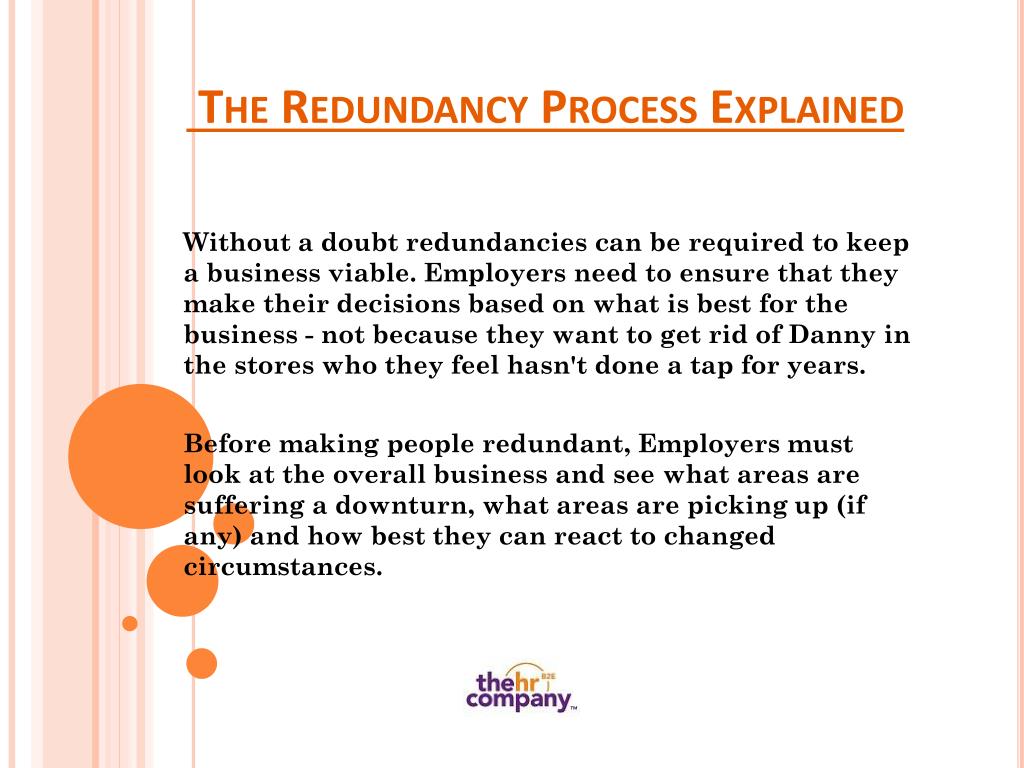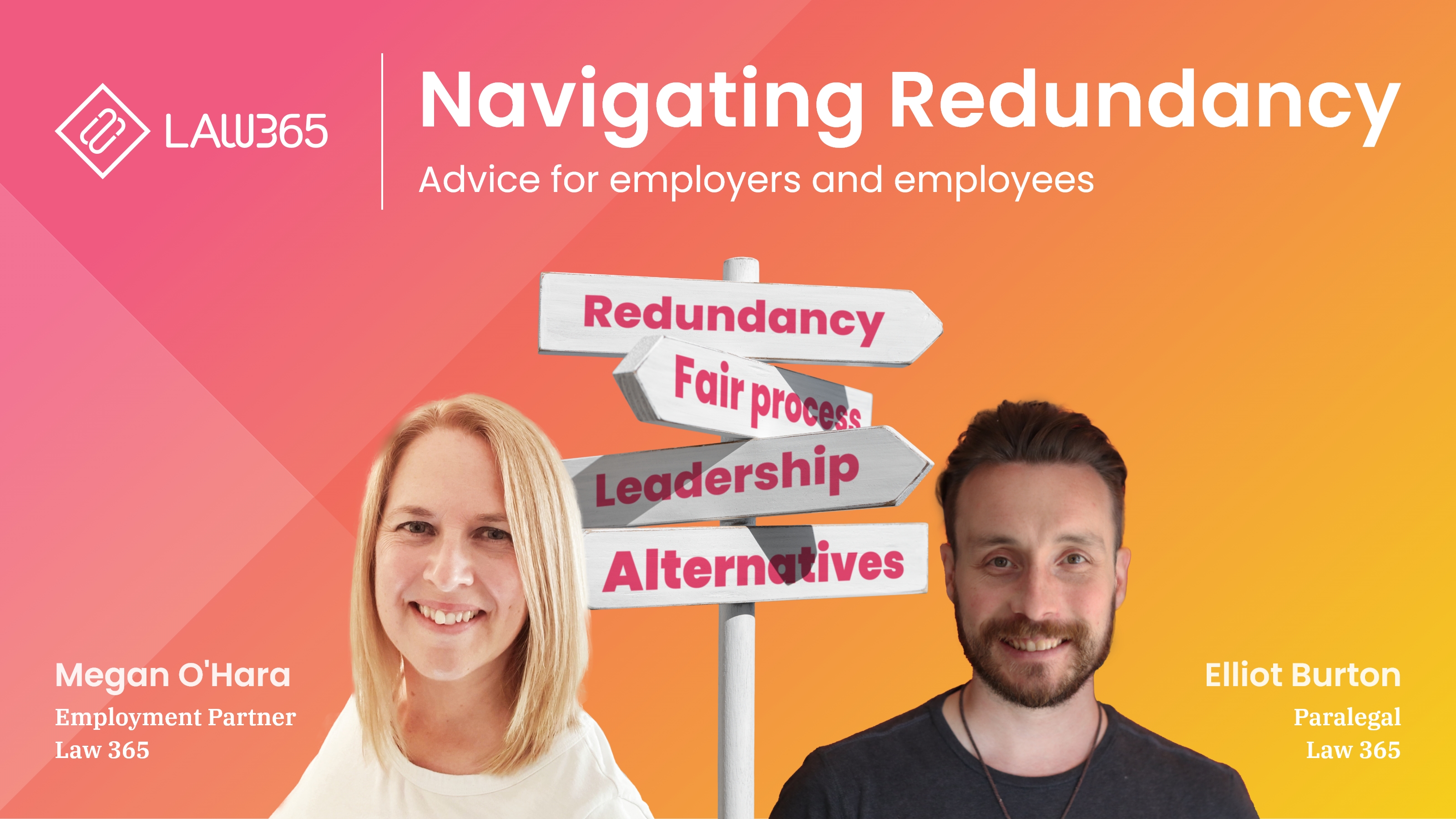If a Company Goes Bust Who Pays Redundancy? Legal Insights for UK Employees
If a Company Goes Bust Who Pays Redundancy? Legal Insights for UK Employees
Blog Article
Checking Out the Interaction Between Company Redundancy and Organizational Versatility for Future Development
In the dynamic landscape of today's business globe, the detailed partnership between company redundancy and business adaptability arises as a crucial element for sustained growth and success. Business often encounter the challenge of striking a fragile equilibrium between preserving a level of redundancy to alleviate dangers and promoting flexibility to respond swiftly to the ever-evolving market needs.
Significance of Business Redundancy
Firm redundancy is a vital aspect that boosts business resilience and mitigates functional risks. By including redundancy actions within the business structure, business can better hold up against unanticipated disturbances and fluctuations in the organization atmosphere. Redundancy functions as a strategic buffer, allowing business to adapt and respond successfully to unanticipated challenges without compromising necessary procedures.
One secret facet of the relevance of firm redundancy is its function in guaranteeing continuity throughout times of crisis. When confronted with sudden changes or emergency situations, redundant systems, resources, or employees can action in to keep vital functions and avoid prevalent disturbances. This continuity not only safeguards the firm's online reputation and client count on yet likewise reduces monetary losses and operational downtime.

Methods for Business Flexibility

Developing adaptable business structures that allow for fast changes to market dynamics and consumer needs is necessary for remaining affordable in a swiftly progressing atmosphere. By proactively identifying potential interruptions and opportunities, companies can proactively thrive and adapt in an ever-changing organization landscape.
Harmonizing Redundancy and Flexibility
Accomplishing an unified stability in between operational redundancy and business adaptability is paramount in navigating the intricacies of a vibrant organization setting. Striking the appropriate equilibrium between redundancy and adaptability is a delicate process that requires a deep understanding of the company's objectives, market characteristics, and danger resistance.
To achieve this equilibrium, companies need to conduct regular assessments of their procedures image source to identify areas where redundancy is essential for risk reduction and where flexibility can drive technology and growth. Executing flexible structures, cultivating a culture of constant knowing and renovation, and motivating open interaction throughout all degrees of the organization are crucial approaches to integrate redundancy and flexibility successfully. By straightening these 2 crucial components, firms can position themselves for sustainable growth and success in an ever-changing business landscape.
Study on Adjustment Success
In examining instances of successful business adjustment, it ends up being obvious that the interplay in between operational redundancy and adaptability is a defining element in shaping resilient businesses. A DVD rental service, Netflix showed amazing flexibility by transitioning into a streaming platform when digitalization interfered with the industry. These case studies emphasize the relevance of operational redundancy combined with business versatility in fostering long-term development and competitiveness.
Building Durability for Future Growth
Structure resilience for future development requires a tactical alignment of operational processes with market dynamics and arising trends. Business should adapt to altering settings by cultivating a culture of versatility, development, and continual improvement.
Furthermore, promoting strong relationships with stakeholders, such as clients, workers, distributors, and the neighborhood, is essential for weathering uncertainties and maintaining trust and support during unstable times. Efficient interaction and openness play an essential role in building durability, as they help promote and straighten expectations collaboration in navigating uncertainties.
In addition, organizations need to prioritize understanding and growth investigate this site efforts to upskill staff members and furnish them with the necessary devices to adjust to changing situations. By buying their labor force, companies can boost their versatility and agility, ultimately reinforcing their strength for sustainable future development.
Conclusion

In the dynamic landscape of today's business world, the intricate partnership between business redundancy and business versatility arises as an important more information variable for continual development and success. Companies frequently face the difficulty of striking a delicate balance between keeping a degree of redundancy to reduce dangers and promoting flexibility to react promptly to the ever-evolving market demands.To achieve this equilibrium, companies require to conduct normal assessments of their procedures to recognize areas where redundancy is required for danger reduction and where flexibility can drive advancement and growth.In final thought, the interplay between company redundancy and organizational versatility is crucial for future growth. Building strength via a combination of redundancy and adaptability will make certain that companies are prepared for the obstacles of the future.
Report this page